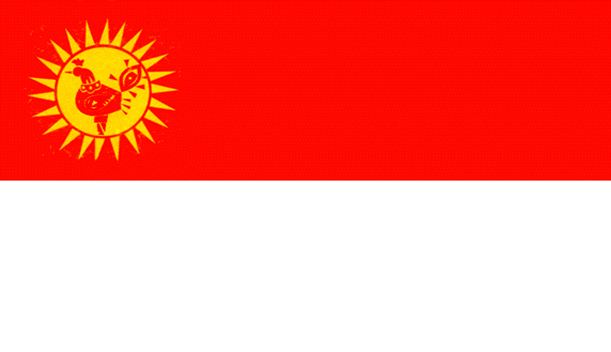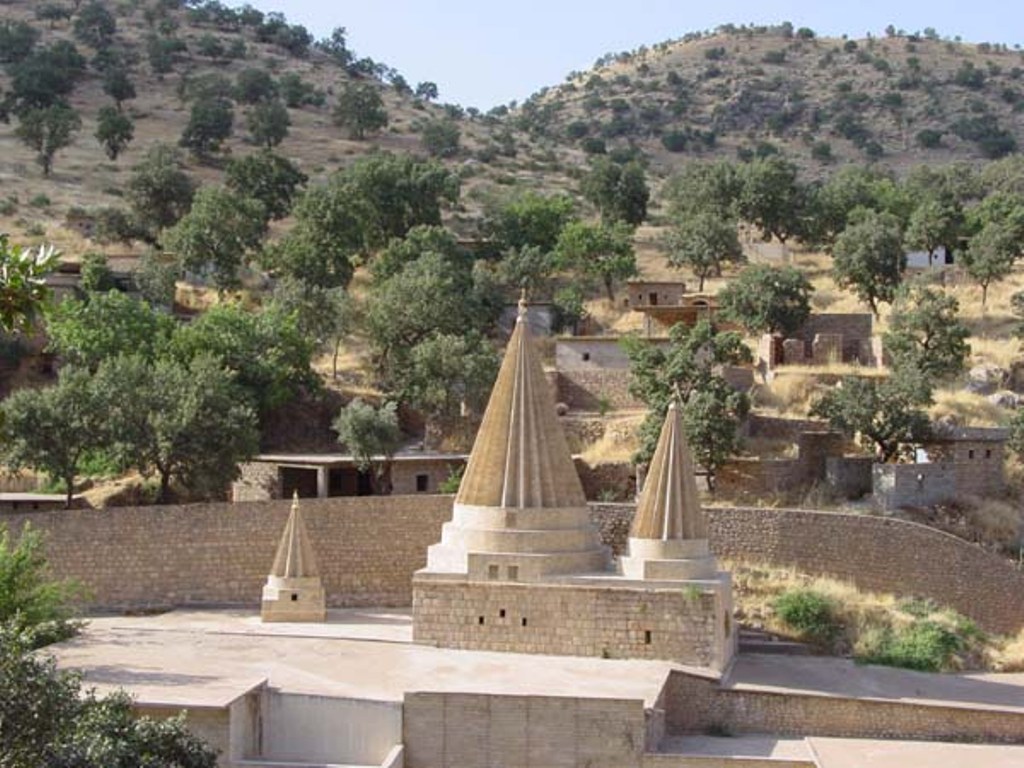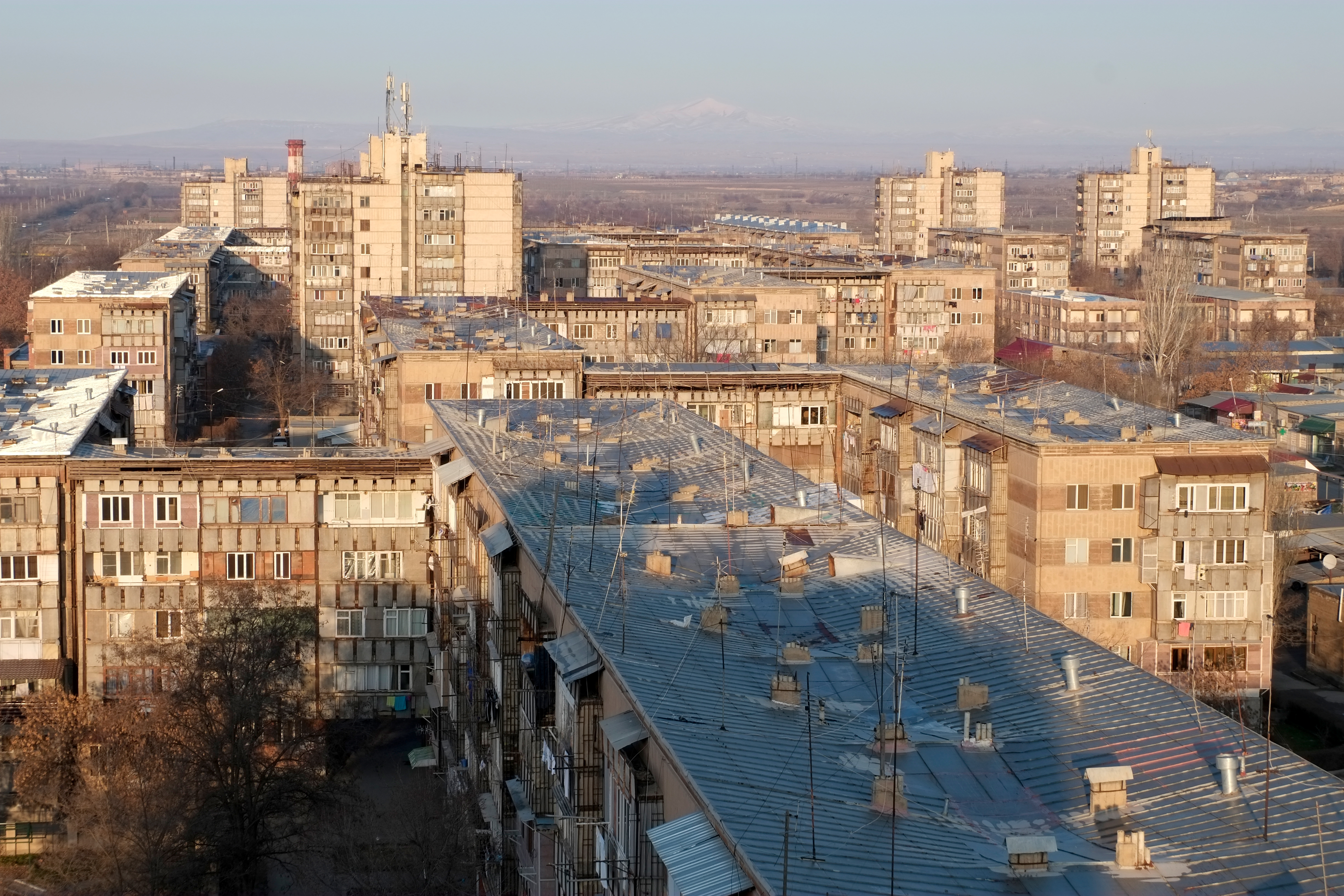|
Aknalich
Aknalich (or Aknalitch, ; formerly, Aygherlich) is a village in the Armavir Province of Armenia. The village is situated on a lake, after which it is named, to the east of Metsamor. Aknalich village is the site of the only Yazidi temple in Armenia. A new temple in the village known as Quba Mere Diwane, opened in September 2019. It is the world's largest Yazidi Temple. The 25 meter tall temple was funded by Armenian-born, Russia-based Yezidi businessman Mirza Sloian. Gallery File:Ayghr lake.jpg, Aknalich lake File:Aknalitch, Yezids temple Ziarat - panoramio.jpg, Aknalich Yazidi Temple See also *Armavir Province * Quba Mere Diwane *List of Yazidi holy places *Yazidis in Armenia Yazidis form the largest ethnic minority in Armenia. Yazidis settled in the territory of modern-day Armenia mainly in the 19th and early 20th centuries, fleeing religious persecution by the Ottoman Empire. While Yazidis were counted as Kurds in ... References *World Gazetteer: Armenia – Wo ... [...More Info...] [...Related Items...] OR: [Wikipedia] [Google] [Baidu] |
Armavir Province
Armavir (, ), is a administrative divisions of Armenia, province (''marz'') in the western part of Armenia. Located in the Ararat plain dominated by Mount Ararat from the south and Mount Aragats from the north, the province's capital is the town of Armavir, Armenia, Armavir while the largest city is Vagharshapat (Etchmiadzin). The province shares a -long border with Turkey to the south and west. The province is home to the spiritual centre of the Armenian nation; the Mother See of Holy Etchmiadzin of the Armenian Apostolic Church. It is the seat of the Catholicos of Armenia, Catholicos of All Armenians. The province is named after the ancient city of Armavir (ancient city), Armavir founded in 331 BC. The province is also the site of the decisive Battle of Sardarabad in 1918 that resulted in the foundation of the First Republic of Armenia, Republic of Armenia. The battle is seen as a crucial historical event not only in stopping the Turkish advance into the rest of Armenia but a ... [...More Info...] [...Related Items...] OR: [Wikipedia] [Google] [Baidu] |
Yazidis In Armenia
Yazidis form the largest ethnic minority in Armenia. Yazidis settled in the territory of modern-day Armenia mainly in the 19th and early 20th centuries, fleeing religious persecution by the Ottoman Empire. While Yazidis were counted as Kurds in censuses for much of the Soviet period, they are currently recognized as a separate ethnic group in Armenia (for more on the relationship between Yazidis and Kurdish identity, see Yazidis). According to the 2022 census, around 31,079 Yazidis live in Armenia. The Election Code of Armenia guarantees one seat in the National Assembly for a representative of the Yazidi community. Several religious Yazidi temples exist in Armenia, including the world's largest Yazidi temple Quba Mere Diwane in Aknalich, which was opened in 2020. In 2021, a Yazidi national theater was opened in Vagharshapat. History Early 20th century Many Yazidis came to the Russian Empire (now the territory of Armenia and Georgia) under their leader Temur Agha during the ... [...More Info...] [...Related Items...] OR: [Wikipedia] [Google] [Baidu] |
List Of Yazidi Holy Places ...
This is a list of Yazidi temples across the world. Background Yazidis are an ethnoreligious group who live predominantly in northern Iraq. Their religion is known as Yazidism. List See also * List of Yazidi holy figures * List of Yazidi settlements References {{YazidisOutline * Yazidi Yazidi Yazidis, also spelled Yezidis (; ), are a Kurdish-speaking endogamous religious group indigenous to Kurdistan, a geographical region in Western Asia that includes parts of Iraq, Syria, Turkey, and Iran. The majority of Yazidis remaining in ... [...More Info...] [...Related Items...] OR: [Wikipedia] [Google] [Baidu] |
Armenia
Armenia, officially the Republic of Armenia, is a landlocked country in the Armenian Highlands of West Asia. It is a part of the Caucasus region and is bordered by Turkey to the west, Georgia (country), Georgia to the north and Azerbaijan to the east, and Iran and the Azerbaijani exclave of Nakhchivan Autonomous Republic, Nakhchivan to the south. Yerevan is the Capital city, capital, largest city and Economy of Armenia, financial center. The Armenian Highlands has been home to the Hayasa-Azzi, Shupria and Nairi. By at least 600 BC, an archaic form of Proto-Armenian language, Proto-Armenian, an Indo-European languages, Indo-European language, had diffused into the Armenian Highlands.Robert Drews (2017). ''Militarism and the Indo-Europeanizing of Europe''. Routledge. . p. 228: "The vernacular of the Great Kingdom of Biainili was quite certainly Armenian. The Armenian language was obviously the region's vernacular in the fifth century BC, when Persian commanders and Greek writers ... [...More Info...] [...Related Items...] OR: [Wikipedia] [Google] [Baidu] |
Metsamor
Metsamor (, ), is a town and urban municipal community in the Armavir Province of Armenia. It is famous for being home to Armenia's Metsamor Nuclear Power Plant, the only nuclear plant in the Transcaucasian region. As of the 2011 census, the town had a population of 9,191. As per the 2016 official estimate, Metsamor has a population of around 8,000. As of the 2022 census, the town had a population of 8,472. Etymology The name of the town is derived from the nearby river of Metsamor. It is composed of 2 Armenian words: ''mets'' () meaning ''great'', and ''mor'' () meaning ''mother's'', being the genitive singular form of the word ''mayr'' () meaning ''mother''. The name is most probably refers to the Virgin Mary as the Great Mother of God. History The construction of the settlement of Metsamor was launched in 1969, within the ''Hoktemberyan'' raion of the Armenian Soviet Socialist Republic. It was mainly founded as the residential settlement of the employees of the Metsamor N ... [...More Info...] [...Related Items...] OR: [Wikipedia] [Google] [Baidu] |
Quba Mere Diwane
Quba () is a city and the administrative centre of the Quba District of Azerbaijan. The city lies on the north-eastern slopes of Shahdag mountain, at an altitude of 600 metres above sea level, on the right bank of the Kudyal river. It has a population of 47,200 (2023). History Quba was mentioned in works of various European geographers, in ancient Arabic and Albanian sources. The castle built by the ruler Anushiravan in the 11th century was called "Bade-Firuz Qubat", and in the Arabic sources of the 12th century Quba was mentioned as "Cuba". In the 13th century, in the Dictionary of Geographical names of Arabian scientist Hamabi it was mentioned as Kubba, and in the sources of 16th century Quba was referred to as "Dome". Guba (Quba) city originated from the riverside village of Gudial. In the mid-18th century, after moving his residence from Khudat, Hussain Ali became Quba's Khan (tribal Turkic Muslim ruler) and raised fortress walls around the city. He thereafter attempt ... [...More Info...] [...Related Items...] OR: [Wikipedia] [Google] [Baidu] |
Populated Places In Armavir Province
Population is a set of humans or other organisms in a given region or area. Governments conduct a census to quantify the resident population size within a given jurisdiction. The term is also applied to non-human animals, microorganisms, and plants, and has specific uses within such fields as ecology and genetics. Etymology The word ''population'' is derived from the Late Latin ''populatio'' (a people, a multitude), which itself is derived from the Latin word ''populus'' (a people). Use of the term Social sciences In sociology and population geography, population refers to a group of human beings with some predefined feature in common, such as location, race, ethnicity, nationality, or religion. Ecology In ecology, a population is a group of organisms of the same species which inhabit the same geographical area and are capable of interbreeding. The area of a sexual population is the area where interbreeding is possible between any opposite-sex pair within the ... [...More Info...] [...Related Items...] OR: [Wikipedia] [Google] [Baidu] |





